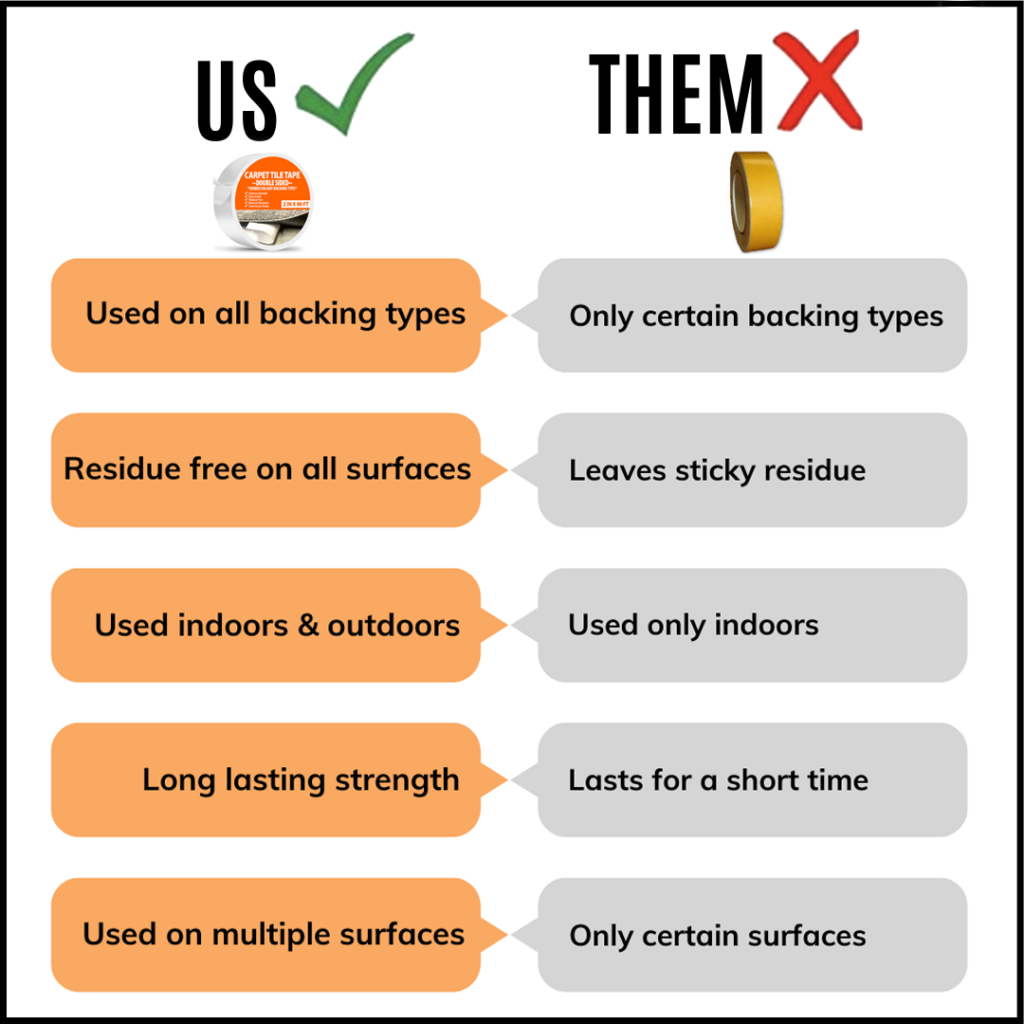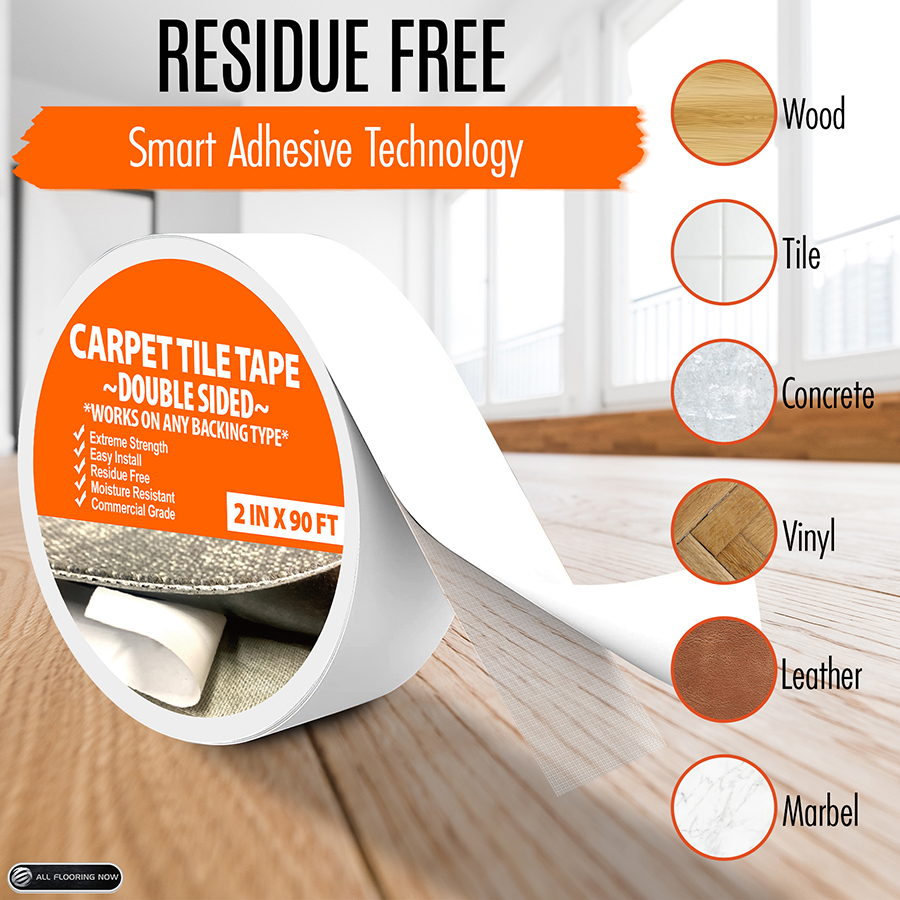Metal Stair Nosing Installation Using Double Sided Carpet Tile Tape
Share
When it comes to enhancing the safety, durability, and aesthetic appeal of stairs, the installation of metal stair nosing is a crucial step. While traditional methods often involve screws, nails, or specialized adhesives, using double-sided carpet tile tape can offer a unique and efficient alternative. Here’s a detailed guide on how to install metal stair nosing using double-sided adhesive techniques, along with some essential tips and considerations.
Preparation and Tools
Before you begin the installation, ensure you have the necessary tools and materials:
- Metal stair nosing: Choose a nosing that fits your stair type (e.g., wood, concrete, terrazzo).
- Double-sided carpet tile tape: High-strength, pressure-sensitive adhesive strips.
- Tape measure: For accurate measurements.
- Pencil: To mark the stair surface.
- Steel saw or tin snips: For cutting the metal nosing to size.
- Metal file: To smooth any rough edges.
- Safety glasses and gloves: For protection during the installation process.
Preparing the Surface
The success of the installation heavily depends on the preparation of the stair surface. Here are the steps to ensure a smooth and secure installation:
- Clean the Surface: Thoroughly clean the stair surface to remove any dust, debris, grease, or stains. Use a cleaner if necessary and allow the surface to dry completely.
- Inspect and Repair: Inspect the stairs for any cracks or indentations. Repair these with an appropriate filler and ensure the surface is smooth.
- Sand and Clean: Lightly sand the surface and clean it with a damp cloth to improve the adhesive bonding of the nosing.
- Dry the Surface: Ensure the surface is completely dry and dust-free before proceeding with the installation9.
Cutting the Metal Stair Nosing
Accurate measurements are critical to ensure a proper fit:
- Measure the Stair: Measure across the front edge of the stair to determine the length of the nosing required.
- Cut the Nosing: Use a steel saw or tin snips to cut the metal nosing to the measured length. Ensure the cut is smooth and even.
Applying Double-Sided Carpet Tile Tape
- Cut the Tape: Cut the double-sided carpet tile tape with a utility knife into strips that are slightly shorter than the width of the metal nosing. This will help in aligning the nosing without excess tape.
- Apply the Tape: Press the tape to the back of the metal nosing. Peel off the paper film side of the tape and apply it to the back of the metal nosing, ensuring it is centered and evenly spaced. For added security, you can apply multiple strips along the length of the nosing.
Installing the Metal Stair Nosing
With the tape applied, you can now install the metal stair nosing:
- Align the Nosing: Place the metal nosing on the front edge of the stair, ensuring it is flush on both ends.
- Press Down: Firmly press the nosing onto the stair surface, making sure it adheres well to the tape. Use a rubber mallet if necessary to avoid damaging the nosing.
- Check Alignment: Ensure the nosing is level and plumb. If necessary, make adjustments before the adhesive sets completely.
Additional Security Measures
While double-sided tape can provide a strong bond, additional security measures can be taken to ensure the nosing remains securely in place:
- Drill and Screw: If the application requires extra security, pre-drill holes through the nosing and into the stair tread. Insert screws to secure the nosing. This method is particularly useful for high-traffic areas or where the tape alone may not be sufficient.
- Adhesive Caulk: Apply a layer of adhesive caulk to the bottom of the nosing before installation. This adds an extra layer of adhesive strength and helps waterproof the area.
Cleaning Up Excess Adhesive
After securing the nosing, remove any excess adhesive while it is still wet. This will prevent it from hardening and becoming difficult to remove. Use a suitable wipe or cleaner to clean up any spills or overflows.
Final Inspection
Once the installation is complete, inspect each step to ensure the nosing is:
- Level and plumb
- Securely fixed
- Free from any gaps or voids
- Smooth and even
Make any necessary adjustments before considering the installation complete.
Considerations and Limitations
While using double-sided carpet tile tape can be a convenient method, there are some considerations and limitations to keep in mind:
- Adhesive Strength: The adhesive strength of the tape may not be as robust as traditional adhesives or mechanical fasteners. This method is best suited for lighter applications or where the nosing is not subject to heavy wear and tear.
- Surface Compatibility: Ensure the tape adheres well to the stair surface. Some surfaces, such as polished wood or smooth concrete, may require additional preparation to enhance adhesion.
- Removability: One of the benefits of using double-sided tape is its removability. However, this also means it may not be as permanent as other installation methods.
Conclusion
Installing metal stair nosing using double-sided carpet tile tape offers a unique solution for those looking for a non-invasive and easy-to-install method. While it may not be suitable for all applications, it can be a viable option for certain scenarios. By following the steps outlined above and ensuring proper surface preparation, you can achieve a secure and aesthetically pleasing installation that enhances the safety and durability of your stairs. Always consider the specific requirements of your project and the limitations of the materials you are using to ensure the best possible outcome.





